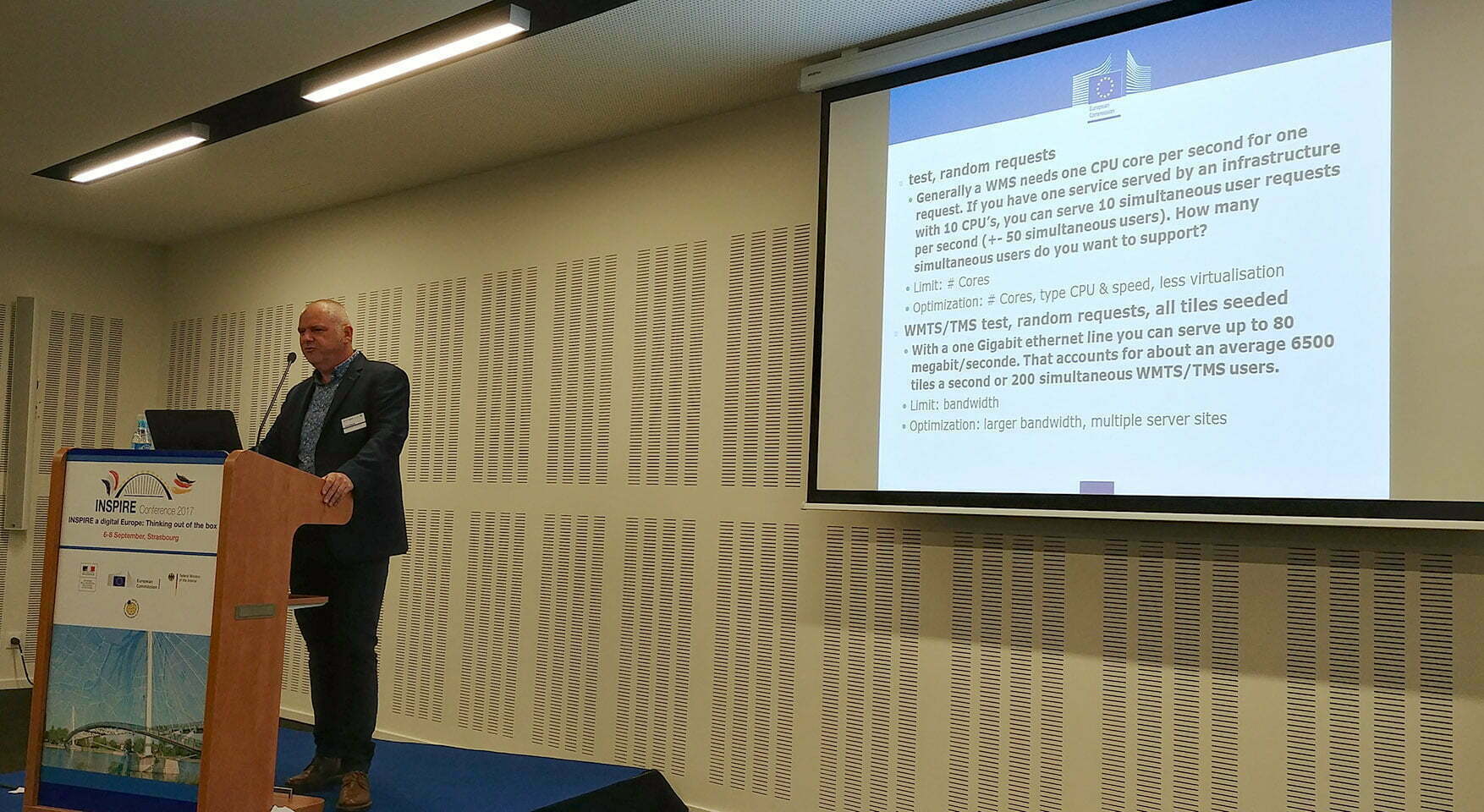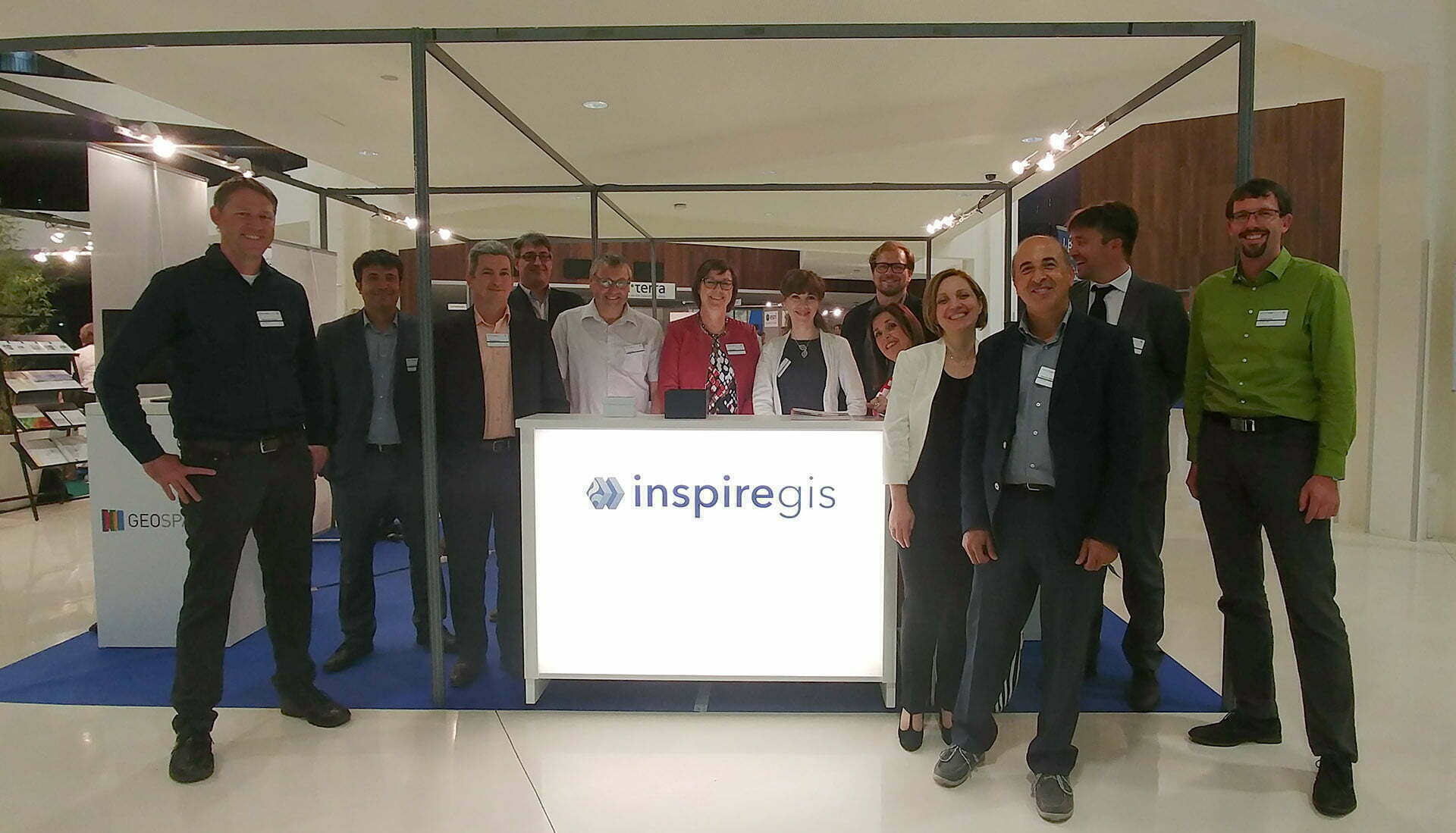
A Retrospective of the INSPIRE Conference 2017
Last week, more than 800 people met in Strasbourg for an event packed with workshops, keynotes and presentations. This somewhat personal retrospective summarizes our impression in broad strokes. First of all, it was a very intense week for our team - with more than 50 meetings and 10 contributions to the programme. For almost all of these, videos are now available online.

Strategy
Most of the INSPIRE community is aware of the discussions surrounding the Fitness for Purpose of INSPIRE, and the related efforts to improve the usefulness of INSPIRE network service and data specifications. There is also an ongoing debate to define a list of Priority data themes and data sets to indicate which steps implementers should focus on. Some stakeholders are very critical of the current state of INSPIRE and point to technical difficulties in implementation as well as to limited usefulness for many use cases.
This criticism is somewhat in contrast to the many organisations moving forward on their INSPIRE implementation. There was a substantial number of presentations and workshops about projects that showed how to successfully implement interoperable services. As an example, Christine Najar from Swisstopo presented their feasibility study, which looked at the concrete efforts required to provide both INSPIRE and ELF/ELS data and services, and came to the conclusion that overall efforts are lower than many people anticipated.
At this point, there is a lot of evidence that some parts of the INSPIRE requirements need to be modified or relaxed, to make implementation easier and more robust. One example is the actual data discovery process, which we analysed in the context of the INScope project. In that project, which we presented together with Wageningen University & Research and the European Environmental Agency, we showed that only a few percent of data sets actually meet all requirements according to their metadata. Another example is the simplification of the encoding, for which several suggestions have been made, e.g. by Denmark and by Germany.

It is also important to focus on the usefulness and usability of INSPIRE data. To increase the usefulness, several national initiatives such as the Spatial Planning Act in the Netherlands build on top of the INSPIRE legislation. INSPIRE extensions are one way to piggyback local use cases onto the INSPIRE infrastructure.
Technology
In the technology and tool oriented sessions, the single keyword that was used most was probably Docker. Docker is a container technology that makes the deployment and maintenance of server based applications much easier than virtual machines did. Docker is a core building block of an entire ecosystem with tools such as docker compose, docker swarm and Rancher that allow us to build scalable, robust applications that can be managed much more effectively than previous generations. The paradigm shift is to move away from individual servers that are manually administered (“Pets”) to fully automated cluster deployments (“Cattle”). No more manual patching of individual Application Servers or Oracle Databases! By now, we have Docker images for all relevant Open Source and Closed Source applications available, be it ArcGIS Server, FME Server, GeoServer, deegree or our own hale connect platform.
Closely related to this topic was the second trendy keyword – the Cloud is coming! INSPIRE mandates a relatively high level of availability and performance for all INSPIRE services, with requirements such as 99% availability and 20 WMS requests per second for a 640x480 raster image. For smaller organisations who do not have dedicated staff and hardware, these objectives can be hard to fulfill, so cloud architectures offer a practical, efficient solution.

One key consideration that popped up several times was the question of whether cloud services are secure enough. Several presenters including Ken Bragg (Safe Software) explained that “AWS is probably more secure than your data center” in one variant or another. AWS is by now offering basically any certification one could ask for, and is very transparent about security issues. Especially in the context of INSPIRE data, which is intended for sharing and publishing, there are very few reasons left not to use cloud services – be it Software as a Service Solutions (such as haleconnect.com) or Platform as a Service resources. For those organisations with additional requirements about who should access data, there are also solutions in place or being developed, e.g. by the CLARUS project, which develops a Cloud Encryption Gateway and a Cloud Access Security Broker.
Linked Data is mostly a topic of research projects and prototypes. The main promise of Linked Data is to better integrate with “mainstream” IT technology by making resources such as individual spatial objects discoverable through search engines and by embedding fragments of linked data in normal web content. Just changing the encoding from GML to RDF or JSON-LD for all INSPIRE data however is certainly no silver bullet.
A Personal View by Anida

This year, I attended the INSPIRE conference for the first time, so I am not going to compare it to previous conferences. I would rather like to focus on the key points and takeaways from an INSPIRE Newbie perspective.
The conference brought together many INSPIRE, GIS, Data and Technology experts, as well as lots of people looking for opportunities to learn something new, and to exchange experiences. The conference was also a meeting point for people looking for new career opportunities, and that made me wonder. Was this market not too small to come to a conference looking for new career opportunities? Then I realized that it is not about the market size, it is about the impact of what was going on with INSPIRE and beyond.
I heard a lot about the approach to open data and making it available for citizens and businesses and listened to discussions about how far public administrations should open their data. In my personal view, on its own, INSPIRE will not bring high-end innovations, but combined with Open Data principles, they become feasible. Attending the SMESpire workshop as a representative of a start-up made me think more about the innovations that can be created by implementing INSPIRE.
Can we bring innovation, open data and fulfillment of legal obligations together? In my opinion, we can, but it is very important to understand why are we implementing INSPIRE. As I see it, INSPIRE should not be the ultimate goal: to implement something just for the sake of implementation. It should be a tool to help countries maintain, manage and exchange big amounts of data effectively, to foster international collaboration. That will then lead to innovations created by businesses. Businesses will find a way to create the added value that will then lead to growth. What does it take? Collaboration and communication, and then a bit more of it. It also takes some kind of a joint platform, that will enable SMEs to take part in different projects and address the needs and priorities of INSPIRE implementers.
So it was a week full of learnings and a really great opportunity for exchange and networking, but moreover, it was an opportunity for so many people to find that one solution, implementation or the expert that will bring them further and closer to their goals.
The way forward
We’ve very much enjoyed supporting this year’s conference through our Gold Partnership, and would like to thank the organisers in Germany, France and at the JRC for the great conference.

There is not much of a break now, though – the next INSPIRE Roadmap milestone is approaching fast: On November 23rd, provision of existing data sets tied to Annex I in INSPIRE interoperable form is required. Many organisations we work with aim to fulfil their obligations in time. Looking beyond this milestone, focus will shift towards annex II and III – a good moment to take a break and evaluate both the major strategic directions and new technology.
We’re looking forward to the 2018 edition in Antwerp! You can bet that we will accept the challenge of the Hunt for the Golden Pineapple!


